With promises of dancing fleas, ectoplasm, exorcism and Jesus’ foreskin, the 2013 Congress for Curious People’s closing event – a two day symposium on the theme of ‘spectacle’ – offered a juicy programme. The Congress is the London edition of an event held annually at the Coney Island Museum in the US, a series of lectures, performances, exhibitions combining scholarly enquiry with entertainment and performance.
The London symposium was held in Bloomsbury’s shabby Horse Hospital. The surroundings could certainly have been more spectacular, but as soon as the talks soon kicked in the audience was transported to more exotic landscapes. The opening address took us on a tour of Coney Island’s extraordinary history, a world of attractions which often re-enacted recent historical events and national disasters. Early 19th Century visitors enjoyed attractions that allowed them to experience the Galveston Flood, the Boer War and the naval battle of the Russo-Japanese War among other events. These events were not remote and historical to Coney Island’s customers. The Galveston Flood attraction was installed in 1902 – only two years after the flood itself had killed 11,000 US Citizens. Meanwhile the popular Boer War re-enactment attraction featured many veterans of the actual war as performers. In a world before mass media and the ability to watch news archive footage of world events at the click of a button, the public’s fascination with death and disaster was (perhaps more honestly) dressed as recreation and fun.
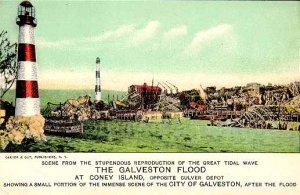
Alongside these disaster recreations were cycloramas, where fantastical journeys were played out across a giant moving canvas, augmented with sound effects, lighting changes and special effects. This kind of storytelling has much in common with the current entertainment industry’s preoccupation with moving beyond the screen through 3D cinema, immersive theater and other extensions, using all the senses as a way of engaging audiences.
The first formal talk of the day came from Richard Barnett, an Engagement Fellow for Wellcome Trust, who gave a brief and beautifully eloquent history of England’s fairs. Beginning as celebration of saints days, these fairs were originally commerce environments and later shifted their focus to that of spectacle. The fairs soon became known for their exotic, excessive nature – an escape from everyday life and a chance to let loose in an otherwise tough and restrictive society. In his Prelude, Wordsworth describes the infamous St Bartholomew’s Fair:
“All moveables of wonder, from all parts,
Are here–Albinos, painted Indians, Dwarfs,
The Horse of knowledge, and the learned Pig,
The Stone-eater, the man that swallows fire,
Giants, Ventriloquists, the Invisible Girl,
The Bust that speaks and moves its goggling eyes,
The Wax-work, Clock-work, all the marvelous craft
Of modern Merlins, Wild Beasts, Puppet-shows,
All out-o’-the-way, far-fetched, perverted things,
All freaks of nature, all Promethean thoughts
Of man, his dulness, madness, and their feats
All jumbled up together, to compose
A Parliament of Monsters.”
Barnett gave a pit-stop tour of some of the most frequent sights of the fair, paying particular attention to elements such as the Menagerie – collections of impressive animals such as ‘The Learned Pig’ from 1785 and later ‘Pinkie the Learned and Scientific Goose’. He spoke of the boundary-crossing nature of fairs, the blurring of the lines between human and animal, the transformation of nature through human action and artifice, and the culture of anarchy. For a few days a year, within a semi-formal structure, chaos reigned.
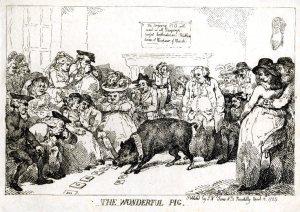
The day progressed with more talks on subjects ranging from Hastings’ Jack-In-The-Green tradition to the politics and ethics of the public exhibition of pathology collections. A talk by Simon Werrett on the history of fireworks included some interesting material. Apparently one theory of the origins of fireworks is that they were inspired by the loud bangs bamboo makes when thrown in fire, and that in ancient China bamboo sticks were planted around demon-infested forests and set on fire to frighten the demons into staying put. When fireworks came to Europe they were enthusiastically adopted by the Catholic Church (always fans of the spectacle) and later by Government and Monarchy. Werrett refers to the function of fireworks displays as ‘early propaganda films’, requiring a big budget and having a huge audience impact in the 16th and 17th century. As well as being used to raise morale and patriotism at home, they were transported to ‘the colonies’ and used to create ‘shock and awe’ in indigenous populations.
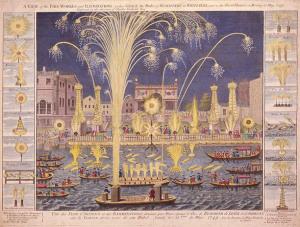
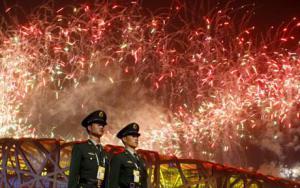
The highlight of the afternoon was a talk by Bill MacLehose, Lecturer in History of Science and Medicine at UCL, entitled: ‘The Foreskin of Jesus and other bits: Medieval relics and visions of the Christ Child’. Alongside some pretty interesting general chat on religious relics, MacLehose discussed the worrysome issue of what happened to Jesus’ circumcised foreskin. Did it ascend to heaven with the rest of his body, or does it remain on Earth? Several churches and institutions around the world have claimed it over the years and it has appeared in numerous religious stories, including the astonishing account of Catherine of Sienna who apparently wed the baby Jesus in a mystical vision in which the Holy Child offered his foreskin as a wedding ring.
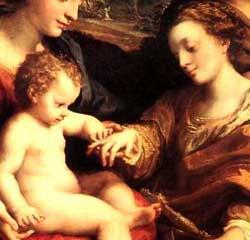
The day ended with a talk by Ross MacFarlane, Research Officer at Wellcome Library. He gave a behind the scenes view into some of the Wellcome Library’s material relating to the history of the freakshow. MacFarlane showed the usual entertaining, kitch and disturbing freakshow images, but the real meat of the talk was in the context he offered, describing in detail the lives and characters of the people presented. These lives were often complex and impossible to understand in the black and white terms they are often presented in. The real stars of the freak shows were undoubtably exploited in some senses, but also gained money, respect and some degree of autonomy in a world they may have otherwise been unable to survive in. The personal stories discussed were funny, sad, moving and very real.
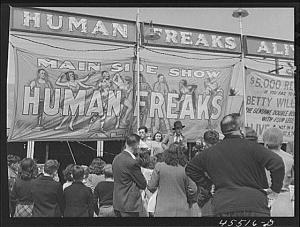
Day two started with explorations of spectacular insects, from stop-motion creepy-crawlies to the classic flea circus. The day continued with a rather academic look at the idea of ‘the blob’, from interior design to architecture to B-Movie horror. Despite being a little unformed, the talk included some great imagery and ended on a high with a chemistry demo in which a small bottle of liquid transformed into a threatening orange amorphous mass crawling across the stage and towards the audience.
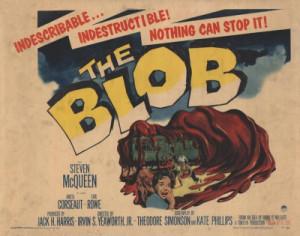
In the afternoon a talk by Chiara Ambrosio on showed how paganism, Catholicism, medicine and performance collided in the ritualistic practice of Tarantism in Southern Italy. Ambrosio showed how this dance, originally seen as a medical ritual performed to combat the bite of a spider, can be viewed as an act of expression and resistance, performed predominantly by poor women in a society over which they had little control. In the next talk photographer Shannon Taggart shared her journey as an artist exploring Spiritual Mediumship, Ritual and the Search for Ectoplasm. Displaying powerful photographs of mediums mid-trance, Taggert walked a delicate line between expressing a belief in the possibility of the spiritualists’ credibility, while keeping one foot planted in the academic art world.
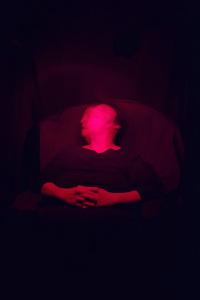

The final talk of the day came from James Kennaway, History of Medicine and Disease at Durham University. It took on the rich and prickly topic of ‘Psychiatry vs. Religion’. Kennaway discussed key offensives from both sides of this epic battle, from California’s Scientology-funded Psychiatry: An Industry of Death Museum to clinical diagnosis of Jesus’ mental health disorders. Moving fast through territory including hysteria (as relious ecstacy), sexual repression and ‘the spermatic economy’ (including a reference to the practice of putting chloroform on the penis to reduce its demands), the experiences of female saints in reference to ideas of ‘natural female masochism‘, and religion as an Obsessive Compulsive disorder (apparently religious people are more likely to be diagnosed with OCD).

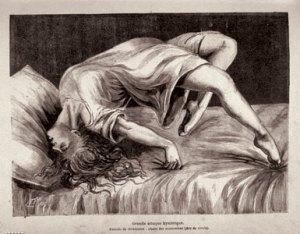
He rushed through a wealth of information before reaching a sort-of-conclusion to do with the idea that both psychiatry and religion are tied to the idea of the loss of ‘self’, that this loss of self is always complex, often necessary and sometimes positive.
Keep on top of what the Congress for Curious People are up to at: curiouscongress.wordpress.com
